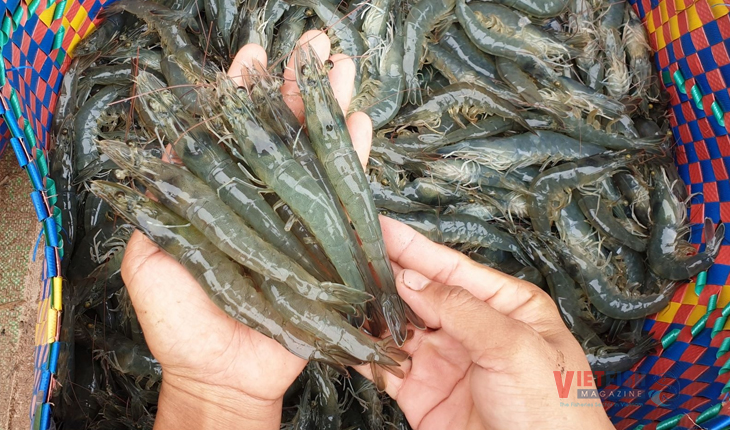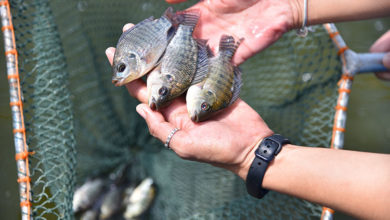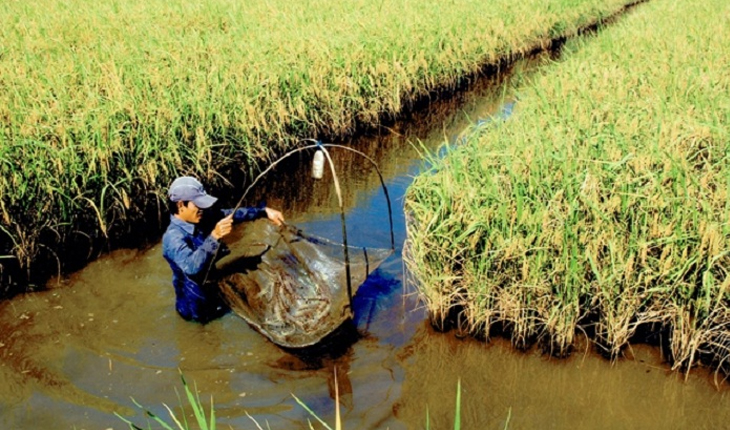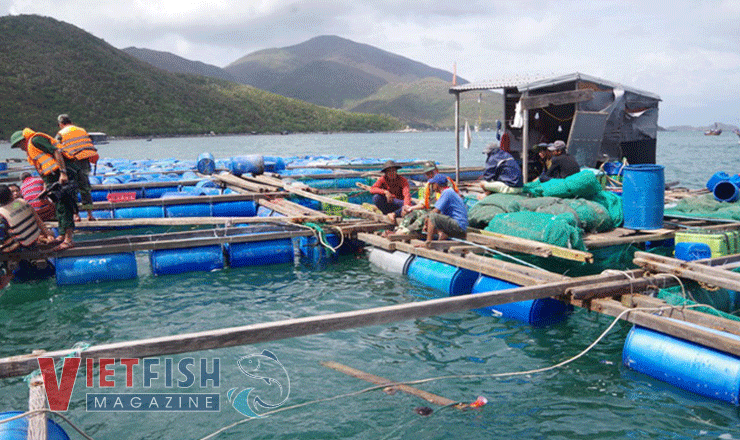Current status on single-cell proteins as aquaculture feed
When estimate of world protein need is made, there appears to be a huge increasing shortfall in supplies that is termed the “protein gap”. The low quality of many vegetable proteins and uneven worldwide distribution of protein further amplify the problem. The growth in aquaculture is driving demand for additional protein to feed fish and crustaceans. Aquaculture has grown faster than any animal protein sector at ∼7% compound annual growth rate over past two decades compared to ∼4% for poultry [1]. Estimates are as much as 15 million tons new protein will be needed for aquaculture by 2050. Where is this going to come from? This will not come from fishmeal, certainly. We are already harvesting anchovy and other pelagic species at their maximum sustainable limit and supplies are going down 30% in the past decade. Plant proteins will continue to play an important role, but we simply do not have enough land. While actual production of protein from insect larvae was only a few thousand tons in 2018. Insects contain negligible amounts of eicosapentaenoic acid (EPA) and docosahexaenoic acid (DHA) & lower levels of omega-3 & thus it shows less ideal nutritional profiles. There appears to be some traction gaining alternative protein sources in the sector.
Feed is a major cost in aquaculture production, and protein ingredients particularly dominate aquaculture feed cost. Diets of farmed fish are changing and fish meal must be increasingly replaced by other unconventional protein sources that will put less pressure on the environment. Thus, efficient feed is essential to manage production costs and improve the sustainability of aquaculture. In response to depleting fish stocks and increasing global aquaculture production, research and development around single-cell proteins (SCPs) is making headway as an alternate ingredient to replace fish meal in aqua and other livestock feeds. It is to be noted that aquaculture species exhibit low feed conversion ratios (FCRs) of 1.1–1.6 kg of feed per kg of edible seafood as against 1.4–1.8 for poultry, 2.6–4.4 for pork, and 3.5–9 for beef. The FCR is the amount of feed an animal needs to gain one kilogram of body weight. Therefore, Fish are actually the most efficient animal to produce, as the feed conversion ratio (FCR) is so low. So aquaculture contributes to a more sustainable animal protein industry, and SCP is poised to play a major role in its future success. Aquaculture diets generally have higher crude protein content from (35−60 wt%) compared to terrestrial livestock at 12−26 wt%. Traditionally, fishmeal (i.e. ground, dried trash fish and/or fish trimmings) has been the preferred protein ingredient in aquaculture because of high crude protein, high essential amino acid (EAA) and ‘wholeness’ of the ingredient. A key challenge for the aquaculture industry is sourcing sustainable, renewable high-protein ingredients. The production of fishmeal cannot scale using terrestrial plant meals which lack the EAAs required by many aquaculture species and can contain antinutritional compounds, like phytic acid. In this context SCP, i.e., protein produced in microbial and algal cells, is an effective alternative option. The SCP contains high levels of proteins with excellent amino acid profiles and nucleotide content, making it a more cost-effective. SCP from improves an animal’s ability to absorb amino acids and improves FCR because it does not contain antigens typically found in plant proteins like soybean meal, making it excellent for aquaculture applications.
The term single cell protein (SCP) refers to dead, dry cells of micro-organisms such as yeast, bacteria, fungi and algae which grow on different carbon sources. The name SCP was coined in 1966 by Carroll L. Wilson of MIT to give a better image than “microbial protein”.
SCP has the potential to deliver multiple solutions through a myriad of products and production approaches, but considerable research, development and particularly scale-up is still required. SCP products can be prepared from different microbial sources, including microalgae, yeast and other fungi, and bacteria.
| SCP sources | Protein content | Few examples of organisms |
| 1. Microalgae | 60 – 70% | Chlorella, Desmodesmus |
| 2. Yeasts | 30-50% | Saccharomyces,Candida |
| 3. Bacteria | 50-80% | Methylococcus, Cupravidus |
| 4. Protists | 10-20% | Schizochytrium |
Microalgae have created special interest by potential production of omega-3 fatty acids (i.e. eicosapentaenoic acid (EPA) and docosahexaenoic acid (DHA)) [2] and carotenoids, namely astaxanthin — an antioxidant, immunostimulant and pink pigment for salmon and shrimp.
Yeasts and fungi have long histories as animal feed ingredients. The most widely known species are Saccharomyces cerevisiae, various Aspergillus and Fusarium venenatum, but other strains are attracting interest for protein replacement such as Candida utilis and Kluyveromyces marxianus [3]. In most cases though, the aim is to deliver benefits of immunomodulation and antioxidants.
Bacterial SCP strains can produce very high crude protein content (>80 wt%) and EAA values, along with vitamins, phospholipids, and other functional compounds [4,5]. Bacteria are usually higher in protein (50 to 80%) than yeast (40 to 60%) or fungi and have more rapid growth rates. Potential phototrophic bacterial strains are recommended for single cell protein production. Some researchers also suggest use of methanotrophic and other bacterial species for single cell protein production.
Protists like Schizochytrium limacinum are of particular interest because of their ability to produce omega-3 fatty acids [6].
Competitors of SCP developers & their products
In the table below, several SCP developers and their product details with infrastructures have been summarized to catch a glimpse on progress in SCP generation.

Single-cell protein developers targeting aquaculture feed
Cargill of USA operate it’s fish feed business across several countries. The company is expanding its venture of sustainable alternatives to fishmeal in aqua feed. It’s very recent agreement with White Dog Labs secures access to a ProTyton™. White Dog Labs’ SCP is anaerobically produced non GMO product developed by fermentation with corn feedstock. Like fishmeal, this SCP is high in protein and amino acids. ProTyton™ is supposed to be come out from White Dog Labs’ in 2020.Cargill plans to begin to add ProTyton™ in salmon feed, with the possibility of expanding to shrimp and other species as production volume increases. In trials, salmon fed a diet containing SCP achieved encouraging growth performance comparable to salmon on a conventional diet. Due to its high crude protein and essential amino acids, ProTyton allows lower cost ingredients to reduce total feed costs. Further, ProTyton will support gut health and reduce antibiotic use. ProTyton technology solutions are based upon harnessing the unique abilities of bacteria within the Clostridia class by fermentation platform called MixoFerm™. Bacterial SCPs produced using methane as a feed stock was first evaluated in rainbow trout feeds reported that upto 80% fish meal could be replaced without compromising fish performance [7].
ProTyton™ SCP feed to grow Salmon
Progress in this sector
Creating an alternative for fishmeal is a very challenging task. Vegetable protein is cost effective and scalable, but does not have the essential amino acid content to match the quality of fishmeal. Further soybean meal contains anti-nutritional factors including protease inhibitors, lectins, tannins, phytic acid & indigestible carbohydrates. Use of insect meal (IM) and insect oil is permitted in fish feed but these have certain limitations. About twenty years back high quality SCP was produced for aquaculture since then it has been improved, tested successfully specially on Atlantic salmon. And a commercial microbial biomass mixture of bacteria and microalgae has been extensively tested on black tiger shrimp (Penaeus monodon). One study even suggests it can overcome the growth disadvantages when fishmeal and fish oil are removed from the shrimp diet, and another shows improved growth rates reported when this mixture is included at 10 percent of the diet. Report from Fish Farm Feeder (FFF) published on 05.12.2018 showed that KnipBio, the US company produced aquafeed ingredients from SCP, has announced successful completion of trials studying the efficacy of its KnipBio Meal (KBM) in the diet of fingerling rainbow trout. Chief executive of the company Larry Feinberg said that trial results have shown to be overwhelmingly positive and provided strong evidence that KBM is a highly effective feed ingredient for salmonids including juvenile rainbow trout. The source of KBM comes from Methylobacterium extorquens fermentation platform. It is metabolically versatile microbes. Calysta’s (HQ at California, USA)FeedKind is another innovator in sustainable products of SCP & their FeedKind aqua protein is appropriate for salmonid fish diets at all life stages. In addition this protein can help to maintain a healthy gut in salmonid species. Calysta’s FeedKind is made via a patented natural-gas fermentation platform. In 2016 Danish player UniBio started production of microbial biomass through Unibio’s U-Loop® technology to produce UniProtein. UK start-up Deep Branch Biotechnology is relying a combination of CO2 (power station emission in North Yorkshire) & hydrogen in production process using proprietary bacterial strain in gas fermentation process.If 10 kg of CO2 goes into process then 7 kg of protein comes out. So Deep Branch’s approach is popularly termed “Turning Carbon to Carp feed” or “Power to Protein” or ‘Pollution to Protein”. Their full industrial scale production will start from 2024. This technology is truly a climate friendly approach of SCP production. String Bio of India is the only Asian company which ventures to produce high quality SCP for aqua feed through SIMP: String Integrated Methane Platform. So this platform uses the source of SCP which is the second most dominant greenhouse gas.
SCP production protocol simplified
Following basic steps are involved in SCP production process.

 The fermentation process requires a pure culture of specified microorganisms which was grown on suitable raw materials and then it is separated by screening in correct physiological state. This process contains a fermenter for the process to be carried out. A fermenter is provided with all the equipment needed to run the process smoothly. It is included a thermostat for the temperature regulation, pH detector for the measurement of pH, aerator for continuous supply of oxygen and a stirrer. Culture medium is placed in huge size fermenter and the process is carried out leading to the cell separation and the supernatant of the cell is collected. Microbial biomass is produced by using either solid or submerged fermentation process. Once the fermentation is done, the harvesting of biomass is carried out, this can be utilized as a source of protein and is subjected for further processing steps such as cell disruption, purification, washing and protein extraction.
The fermentation process requires a pure culture of specified microorganisms which was grown on suitable raw materials and then it is separated by screening in correct physiological state. This process contains a fermenter for the process to be carried out. A fermenter is provided with all the equipment needed to run the process smoothly. It is included a thermostat for the temperature regulation, pH detector for the measurement of pH, aerator for continuous supply of oxygen and a stirrer. Culture medium is placed in huge size fermenter and the process is carried out leading to the cell separation and the supernatant of the cell is collected. Microbial biomass is produced by using either solid or submerged fermentation process. Once the fermentation is done, the harvesting of biomass is carried out, this can be utilized as a source of protein and is subjected for further processing steps such as cell disruption, purification, washing and protein extraction.
Advantages of using SCP
- does not require large expanse of land
- their production is not seasonal nor climate dependant
- high protein content with good amino acid profile, low fat content & good carbohydrate content with high content of digestible proteins
- can be grown on west so environmental friendly
- high rate of multiplication which means a large quantity of biomass can be produced in a comparatively shorter duration
- Many kinds of raw materials have been considered as substrate for SCP production. Conventional substrates are starch, molasses, fruit and vegetable wastes & as well as unconventional ones such as petroleum by-products, natural gas, ethanol, methanol and lignocellulosic biomass.
Conclusion
In the long run, innovative sources of protein are required to meet the feed needs of aquaculture sector as most forage fisheries are either fully exploited to overexploited. To be a viable alternative for fishmeal or fish oil, a candidate ingredient must possess certain features such as- nutritional suitability and performance, ready availability, ease of handling, shipping, storage, consumer acceptance, minimal pollution and ecosystem stress, and human health benefits. Finally, competitive pricing is another essential factor.
Microbial protein or SCP qualifies very attractive features as a nutrient supplement. Although high nucleic acid content, presence of non-digestible cell wall, unacceptable colours and flavours and less palatability are the main issues of this product. Therefore efforts are being made to minimize the pitfalls of SCP and thus lead to acceptance of this valuable nutrient supplement to aqua feed on a global basis.
Nowadays, a 2ndgeneration of SCP is produced under strictly controlled industrial fermentation processes which makes SCP stable in terms of quality, safety and cost-effective. Also it is characterized by high palatability, high digestible protein content, favorable amino acid profile, low level of ashes and the content of nucleic acids.
 |
Bacterial SCP can be economically converted into a valuable single-cell protein ingredient for aquafeed |
 |
Fermenter to produce SCP |
 |
Trial sample pack of SCP Fish meal |
References
- Ritchie H. & M. Roser (2019): Meat and Seafood Production and Consumption. Google Scholar.
- Tocher, D.R. et al (2019): Omega-3 long-chain polyunsaturated fatty acids, EPA and DHA: bridging the gap between supply and demand.Nutrients, 11.
- Overland, M. et al (2013): Evaluation of Candida utilis, Kluyveromyces marxianus and Saccharomyces cerevisiaeyeasts as protein sources in diets for Atlantic salmon(Salmo salar).Aquaculture, 402-403 pp. 1-7
- Suman, G etal (2015): Singel cell protein production: a review. Int J Curr Microbiol Appl Sci, 4 , pp. 251-262.
- Anupama, R and Ravindra, P. (2000). Value-added food: single cell protein. Adv. 18, 459–479.
- Ward Owen P & Ajay Singh (2005): Omega-3/6 fatty acids: Alternative sources of production. Process Biochemistry, Volume 40, Issue 12.
- Kaushik, S J & P Luquet (1979): Influence of dietary amino acid patterns on the free amino acid contents of blood and muscle of rainbow trout (Salmo gairdnerii R.).Comp Biochem Physiol B 64: 2. 175-180.
Dr. Partha P. Biswas
Fisheries Training & Culture Unit – Simurali Krishi Kendra – Simurali, Dist.-Nadia, West Bengal






